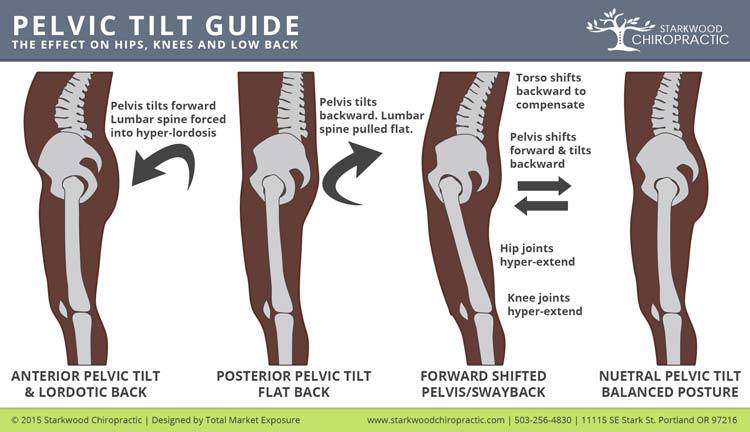Probably not what Joy intended with his comment, but the inaccuracies in LFJ's comment is that I never said "heel shifters" are back on their heels at all times, and I never said I trained in a lineage that tilted the pelvis back to an extreme, or keeps the weight all the way back on the heels in a neutral stance.
Timestamp 1:00
"
When people open their stance with their Wing Chun, there's this idea amongst a lot of lineages that you have to tilt your pelvis forward."
*leans upper body back*
"
Watch what happens to my body automatically. If I'm in a neutral stance and I go to tilt my pelvis forward I'm automatically leaning backwards and putting my weight on my heels."
First of all, you're not tilting your pelvis forward. You're just pushing your pelvis forward. And secondly, your body is not leaning back automatically. You are doing that on purpose. It's entirely possible to do a
posterior pelvic tilt without affecting your vertical axis or weight distribution in any way.
You then go on to say why your weight shouldn't be back on your heels, suggesting that people are keeping weight over their heels in a neutral stance and when engaging with an opponent, all based on you doing a pelvic tilt incorrectly.
I also disagree with your pushing from the ball of the foot to deliver force and your sports examples to justify it. Sprinters and tennis players care about speed and agility but aren't concerned with a bouncing COG or an interrupted line of force when stepping. We must be.
With correct alignment, the line of force from your fist goes through your elbow, to your hips, and back to the heel in a straight line, with equal and opposite force in the reverse.
Your forefoot is in front of that line, which means when pushing through the ball of your foot you are engaging and holding the force in your calf muscles and not allowing it to transfer into the ground through the heel as is the natural direction it wants to go.
By pushing through the ball of the foot you are encouraging more exclusive activation in your quadriceps, especially the relatively small VMO. Whereas, allowing the force to go through the heel will also fire the larger and more powerful posterior chain muscles of the leg which you are inhibiting by holding force in your calf and encouraging VMO "isolation".
Demonstration: Stand with a right rear leg and press into a solid object with your right arm with the elbow down like a VT punch and a slight posterior pelvic tilt (not leaning your upper body back like a clown). Push through the ball of your rear foot and you will feel almost nothing but the calf and VMO, relatively small muscles. Then allow the force to go through the heel and you will feel the entire anterior and posterior musculature of the leg firing together. = Greater force. Then try a short explosive punch with the same setup on someone holding a pad. You will notice you won't have near the amount of leg drive if you don't send it through your back heel. Do that and you'll have much greater force in your punch.
Also when pushing through the balls of your feet your heels are being raised slightly or wanting to (releasing weight) as the calves are firing and your feet are rocking forward and backward as you’re fighting to handle the force in your calves then relaxes off of them after issuing force, rather than allowing the force to solidly transfer into the ground through the heels.
This can be seen when hitting your BOB and dummy. It’s subtle but makes a big difference you can feel and can work against you if the opponent happens to cut into your timing.
In VT, we want to maintain an uninterrupted line of force at all times by not taking big steps and rocking the feet between heel and toes.
Now, that is not to say we are hobbling around on our heels either. Weight is evenly dispersed with the natural balance point over mid-foot. When delivering force though, it must be allowed to go through the heel with equal and opposite force in a straight line to the fist for punching power, stability, and balance during high speed movement in a fight.
Shifting on the heels in training is also not an application. When we pull someone in a drill and they shift on the heels it is testing central axis, balance, line of force, etc.. Many things.
People just look at the hands though and think pull, punch, block… technique applications. They don't understand the abstract nature of drilling and how it relates to free fighting.

